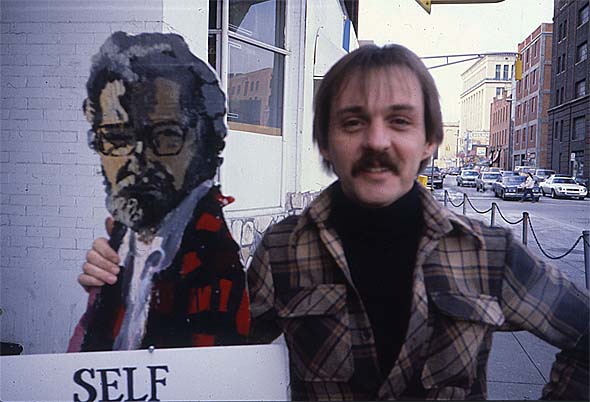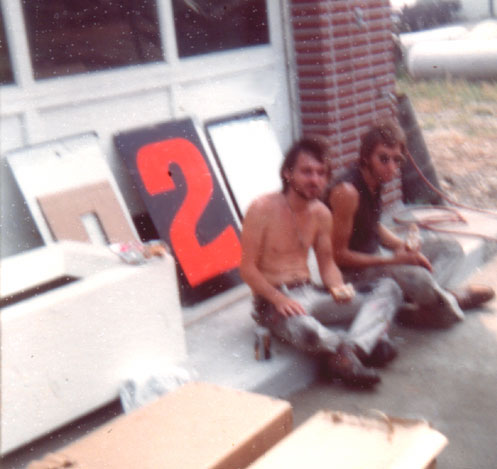Roy B. Castleberry Jr., 60, of Royal Oak for more than 20 years,
formerly of Warren, died Friday, May 25, 2007, at William
Beaumont Hospital in Royal Oak. He was born Jan. 25, 1947, in
Detroit.Mr. Castleberry received a master's degree of
fine arts at Wayne State University and was the owner and
operator of Abeada Corp. for more than 30 years. Abeada Corp. is
a wholesale distributor of semi-precious stones located in Royal
Oak. He was an avid boater and an artist who sketched charcoal
drawings. He has works in the permanent collection of the
Detroit Institute of Arts.
He is survived by sister, Martha J. (LeRoy) Ghekiere of
Metamora; nieces and nephews, Richard (Kelley) Ghekiere of
Farmington Hills, Shelley (Derek) Pauck of Shelby Township and
Judy (Matthew) Bunch of Sterling Heights; grand-nieces and
grand-nephews, Katelyn and Jason Ghekiere, Laura and Clare Pauck
and Madison and Sydney Bunch.
A private service and cremation is being performed;
memorials, Juvenile Diabetes Research Foundation, 24359
Northwestern Highway, Suite 225, Southfield, MI 48075;
arrangements, Sawyer-Fuller Funeral Home, 2125 W. 12 Mile Road,
Berkley; online,
www.sawyerfuller.com.
Jim Pallas:
It was a shock to hear the death of Roy
Castleberry.
Here's the only photo I have of him. He's standing on the
sidewalk outside of the Focus Gallery on Beaubien in 1982 with
his arm around a hitch hiking self-portrait of me. The plywood
hitch hiker was used as a sidewalk sign for a self-portrait
show:

Roy lived with his wife, Chris, on Cass down near Willis in
the corridor. My wife, Janet, and I had moved from 4th and
Forest to Highland Park with our infant son. I met Roy when we
were both in the 1972 Annual Michigan Artists show at the
Detroit Institute of Arts. He called me and said the director,
Willis Woods, removed two photographs from the show because an
Arts Commission member was offended by them. One was a photo of
a vandalized lavatory on Belle Isle. If one looked closely one
could make out the word "fuck" scrawled among the graffiti. The
other was of a man starting to unzip his fly. I forget the
names of the photographers. Roy was organizing a protest
against this interference. Suzanne Hillberry was the curator
of Modern Art at the time and was powerless in the face of the
director and commission member. Roy, I and several other
artists in the show went to a meeting with Director Woods. He
said the board member, who was not named, gave him an ultimatum:
Remove the two works or he would write the D.I.A. out of his
will. Woods said that he was against censorship, that he
respected that the artists would do what we had to do, but
that, for the good of the museum, he was removing the photos.
Many of us, including Roy pulled our works from the show.
Years later, Roy called me up and said he was tired of being
poor. Sign painting and selling an occasional drawing just
didn't cut it. He said he was thinking about selling beads.
I said, "That's crazy, Roy. You can't make any money selling
beads. They're just a...."
I was about to say, " temporary fad," but I started rummaging
through my scant knowledge of recent fashion and then
not-so-recent fashion. Beads are there. I remembered that
Manhattan Island was supposed to been traded for a couple of
trunks of beads and that much Native American energy went into
beaded articles while Victorian ladies appliquéd beads on their
dresses, shoes and bags. Beads were traded for slaves in
Africa. I recalled that cowry shell beads became more valuable
the farther from the seashore that they were traded and that
this principle of distance increasing the value of beads still
prevailed. The longer I thought about it, the more I realized
the desire for beads was universal and constant.
Roy knew all this and more.
He and Chris scraped a little money together and started Beada
Beada. They did quite well. If you went into their little
shop, Roy would educate you about any of the hundreds of beads
they stocked, their history, their meaning and their use. He
would explain which ones went together and why. He would show
you how to string them in multiple strands and finish the
clasp. He would teach you how to attach pendants. He could
answer any question and if he couldn't, he could the next time
you came in. But he had a strict policy: he would not string a
bead himself!
In a few years Roy was complaining about taxes. He said he was
paying more that year in taxes than he made in a ten years as an
artist. He went wholesale Internet mail order. In Asia he was
wined, dined and feted royally as the big bead buyer from
America.
Under his influence, I started using beads in my sculptures
whenever I could. In 1978, he donated the blue and white "good
fortune" beads that rode atop the inflating tubes in my
NorthCourt TubeDance at the D.I.A. and sold me the clear
Austrian crystal beads that adorned my "Self-portrait with
Beads" in the same show.
Roy also gave me the address of Ray Johnson's Buddha U. when I
started doing mail art which started a series of mail art
exchanges culminating in my ill fated Hitch Hiker of Ray.
When Roy got heavy into beads, he told me he stopped making the
beautiful sensuous drawings of nudes that he called "flesh art"
or any other art. I always wondered if that was true. Could a
talented sensitive artist simply walk away from it cold turkey?
Roy was smart, aware and often had a unique perspective on
things. The community is poorer at his passing.
Anne
remembers:
I met Roy a couple of years ago when I started working at a
place he frequented. He was warm and friendly, and I was always
happy to see him come in the door.
He was bright AND funny AND kind. I will miss that sweet smile,
his interesting observations, his fresh and witty commentary.
What a clever and cool guy. Thinking of him...

Roy and Dave Opatik, taken by Tom
Karsiotis
Tom Karsiotis writes:
The photo was taken somewhere around 1972. Roy and Dave had
started a sign company above the Song Shop Bar. Their primary
business was gasoline price signs and most of the work at the
Gratiot Central Market. Roy split for name). We painted hundreds
of those things above the Song Shop and after inhaling paint
fumes for a few hours Dave and I would go downstairs and eat
over salted hamburgers and drink cheap beer. We split up later
and I started the Atomic Sign Co. (after the Mickey Rooney movie
"The Atomic Kid"), Dave retained the Spiffy name and Roy went
into the bead business.
The "Day-Glo" paint we used for the numbers only lasted a year
or two in the sunlight so we had a brisk business repainting
them in the summer. It was at one of these repaints that I
snapped the photo. We would start by tapping off a gallon of gas
from the pump and washing the grease and crud off the panels.
the "Day-Glo" would then be rolled on. At this point we had to
wait about an hour before we could paint the black and that was
a great time for a beer run. It was at this point I took the
photo.
In retrospect it seemed like a great time but I bet at that time
it probably wasn't.